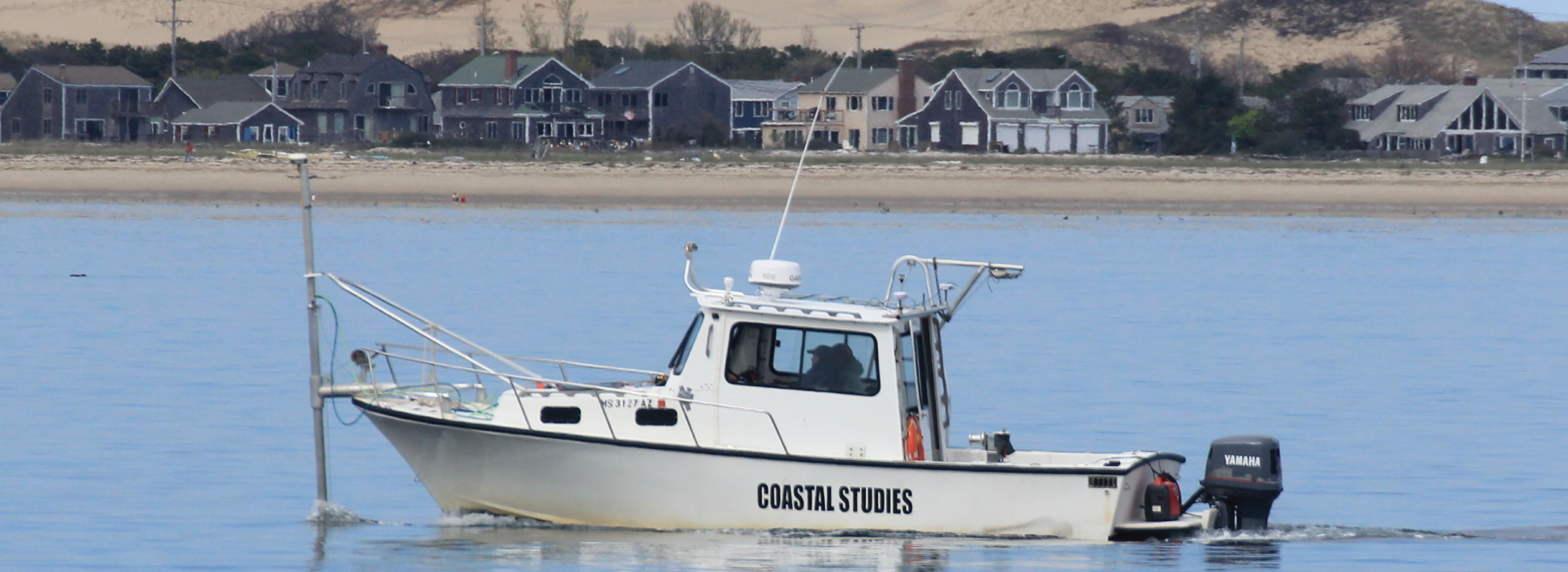Vessel-based acoustic surveys were conducted in Wellfleet Harbor and Cape Cod Bay in 2015 and 2016. This yielded 57.15 km2 of sidescan imagery and 35.32 km2 of co-located bathymetric data, with a mean depth of 3.98 m. Benthic invertebrate, sediment and water samples were collected at 28 stations. In addition, a total of 35 km of seismic reflection profiles (sub-bottom) were collected.
Key Findings include:
- For this study, ecosystem-based mapping was prioritized - focusing on mapping embayments rather than along arbitrary delineations. This system-wide approach increased the explanatory power of the benthic habitat maps, the significance of the statistics calculated and the robustness of the baseline data which can be used for future monitoring and management of Wellfleet Harbor.
- Vessel-based acoustic mapping was greatly enhanced using phase-measuring sidescan sonar, which is ideal for shallow water (less than 10 m) mapping. Co-located bathymetry and sidescan proved to be particularly useful for identifying eelgrass and other submerged aquatic vegetation, changes on the seafloor such as bedform migration and both natural and anthropogenic structures on the seafloor. Dual frequency high resolution sidescan produced exceptional imagery useful for many applications.
- Seismic reflection profiling (sub-bottom) worked well in the shallow water environment of Wellfleet Harbor. Five seismic facies were identified in, including glacial lake floor deposits. Marine mud (facies ‘M’), was found to be ubiquitous throughout much of the harbor and was interpreted to be estuarine mud deposited in low energy basins.
- Since a great proportion of samples were taken in physically dynamic environments it is not surprising that characteristics of the substrate (i.e., grain size metrics) were the best variables for explaining patterns in benthic communities, versus factors such as depth and sediment organic content. Overall, we could explain 55.9% of species distribution. Of the 9838 individuals comprising 98 species we found one individual of a cryptogenic species: Polycirrus eximius (a polychaeta worm). A cryptogenic species is a species whose origins are unknown; meaning it may be either a native species or an introduced species but clear evidence for either origin is absent.
